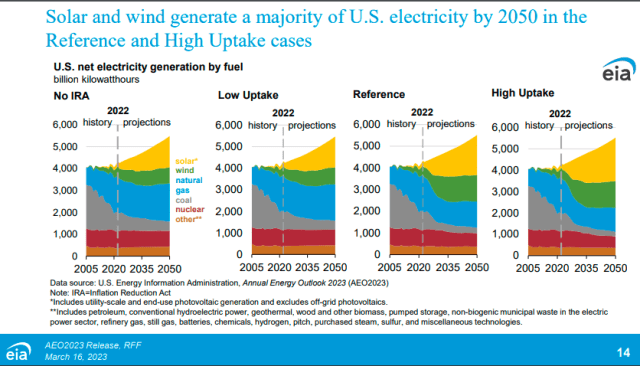U.S. energy-related CO2 emissions are expected to drop 25 percent to 38 percent below what they were in 2005 by 2030, according to the U.S. Energy Information Administration’s (EIA) Annual Energy Outlook 2023 (AEO2023).
By end of the projection period, 2050, U.S. energy-related CO2 emissions are 17 percent lower in this year’s Reference case compared with last year, after EIA accounted for the effects of the Inflation Reduction Act (IRA), energy technology costs and performance updates, a changed macroeconomic outlook, and other factors.
EIA’s projected reductions in U.S. energy-related CO2 emissions are driven by increased electrification, higher equipment efficiency, and the deployment of renewables in the electric sector. Emissions reductions are limited, however, by longer-term growth in U.S. transportation and industrial activity.
“We expect to see significant shifts in energy production and use over the next 30 years,” said EIA Administrator Joe DeCarolis. “The resulting projections for energy-related CO2 emissions are most sensitive to our assumptions regarding economic growth and the cost of zero-carbon generation technology.”
Renewable generating capacity grows in all regions of the United States, supported by growth in installed battery capacity. EIA sees stable growth in U.S. electric power demand through 2050 because of increasing electrification and ongoing economic growth.
Investment in renewable sources such as wind and solar, and the operating cost advantage of those sources, increases the share of zero-carbon electricity generation. EIA projects growth in installed battery capacity in all cases to support growth in renewables.
EIA projects an increase in the deployment of heat pumps, electric vehicles, and electric arc furnaces in the iron and steel industry. In the residential and commercial sectors, higher equipment efficiencies and stricter building codes extend ongoing declines in energy intensity. In the transportation sector, light-duty vehicle fuel efficiency improves due to rising Corporate Average Fuel Economy (CAFE) standards and electric vehicle (EV) sales.
United States will remain a net exporter of petroleum products and natural gas through 2050 due to high international demand leads to continued growth in U.S. production, and combined with relatively little growth in domestic consumption.
Domestic natural gas consumption also remains relatively stable, despite a shift in electricity generation towards renewables. Production of natural gas, however, continues to grow in response to international demand for liquefied natural gas.

